#avaceratops
Explore tagged Tumblr posts
Text
Dinocember: Day 10

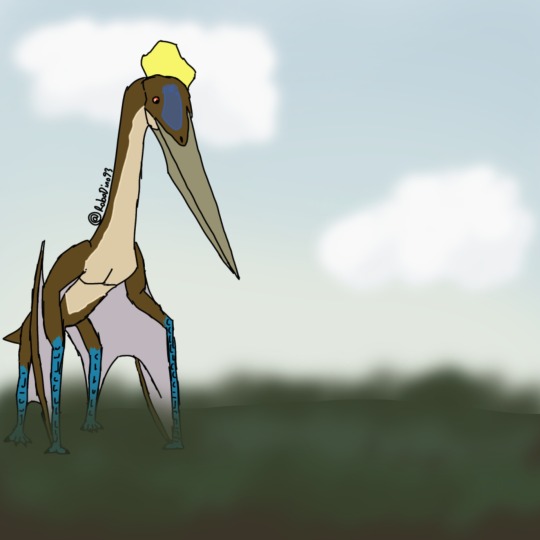



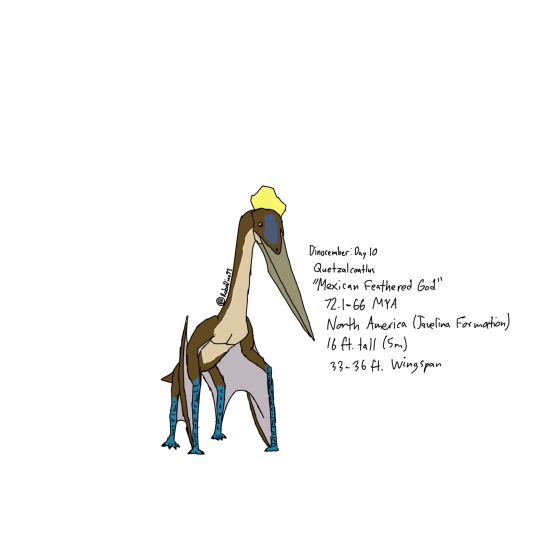
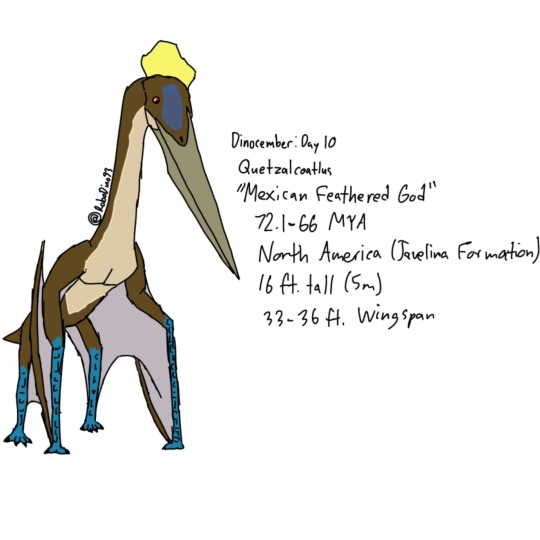




Since both of the Dinocembers I started this year are caught up, I decided to have them both be in the same entry, so welcome to double features.
For TheSavage_Mojo, we have a second Quetzalcoatlus entry this Dinocember, and this time, it seems to understand the treats that are candy canes, and for Myamaa0, a rather jolly Avaceratops was given an easily removable ugly Christmas sweater one Christmas Eve, and yes, its colors are based on the Jurassic Park Explorer, because the reference I used made it click in my mind. Enjoy!
#dinocember#dinosaur#dinosaurs#paleoart#paleomedia#jurassic park#quetzalcoatlus#avaceratops#christmas
10 notes
·
View notes
Text

Orange Orange 🍊
6 notes
·
View notes
Text
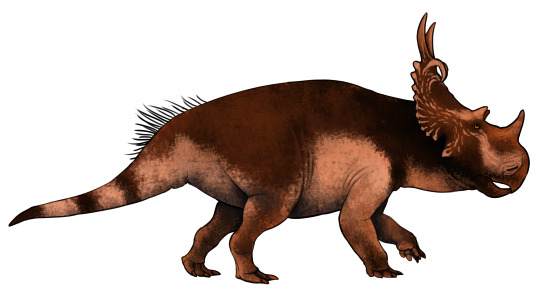
309 notes
·
View notes
Text
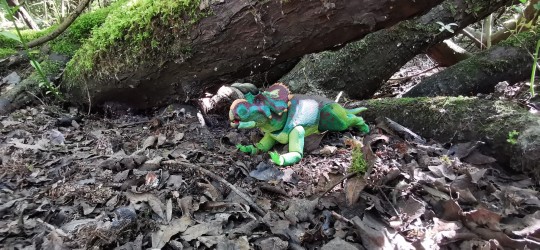
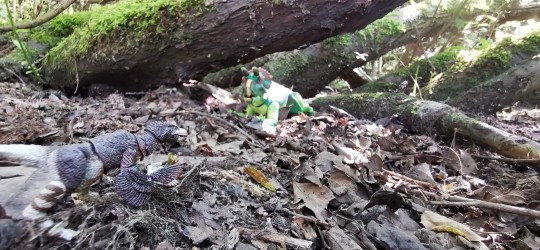

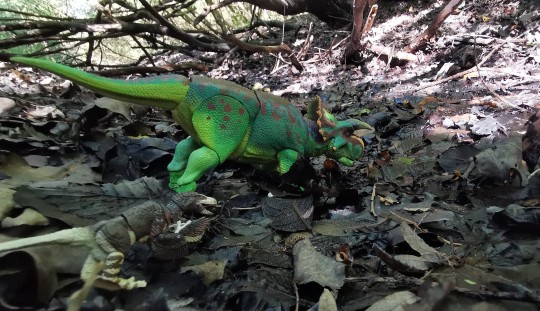

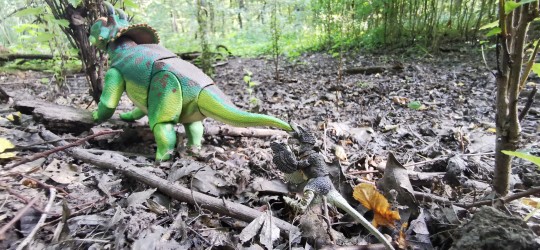

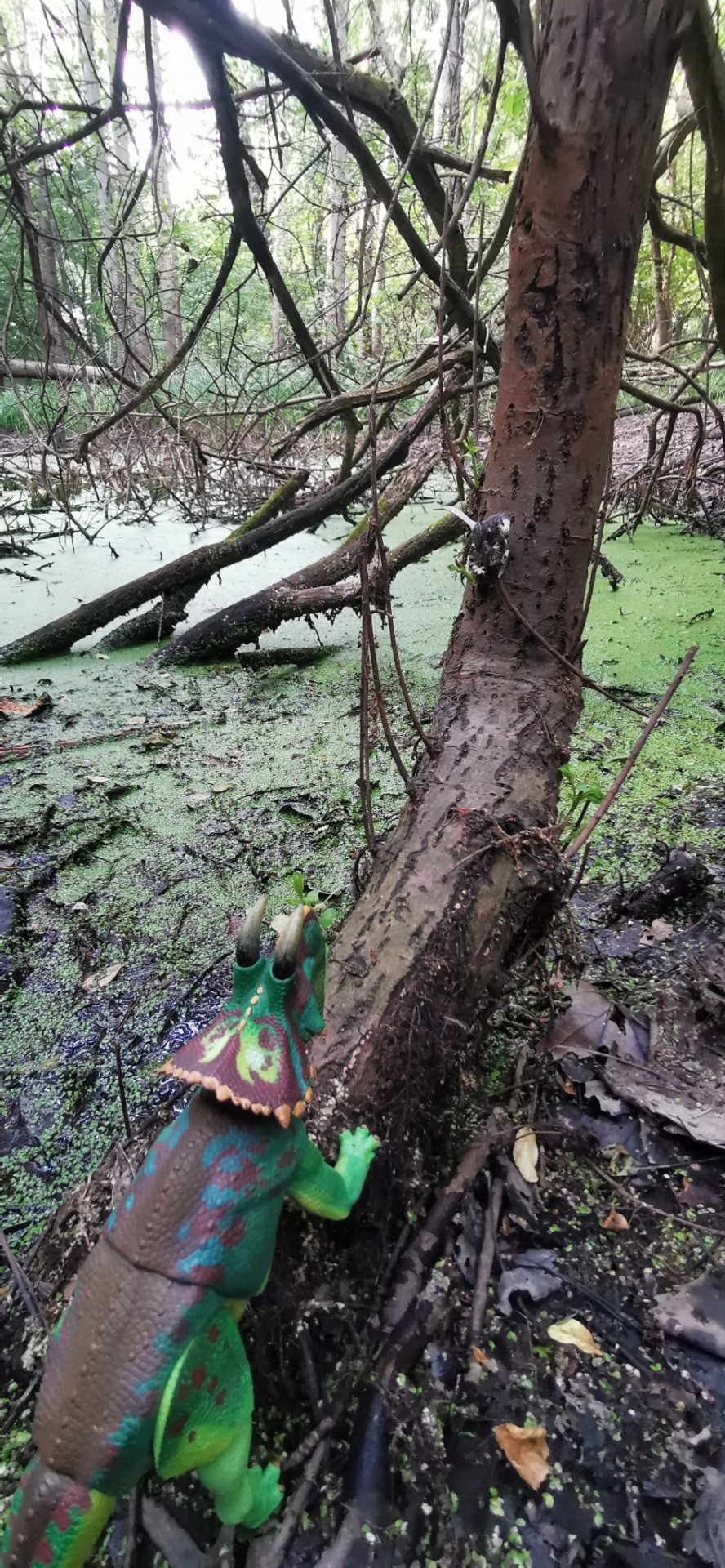
Avaceratops trying to enjoy it's afternoon, despite being bothered by an annoying dromaeosaur - late Cretaceous, Montana
#paleoart#toy photography#paleoblr#amatuer photography#cretaceous period#dromaeosaur#ceratopsian#dinosaurs#beasts of the mesozoic
10 notes
·
View notes
Text

Detailing more domestic SRC species, this time a group of avaceratops-like fellows called "bashers".
Stickmen and dragons tend to select for high body mass over meat quality in large animals like a basher, as high-fat dishes are excellent for gaining weight quickly.
Bashers are a cattle more common in the east due to their resilience to the cold. Comparatively to honks, bashers are much more mild mannered and less flighty, but aren't as good at breeding, so they tend to come in smaller numbers.
9 notes
·
View notes
Text
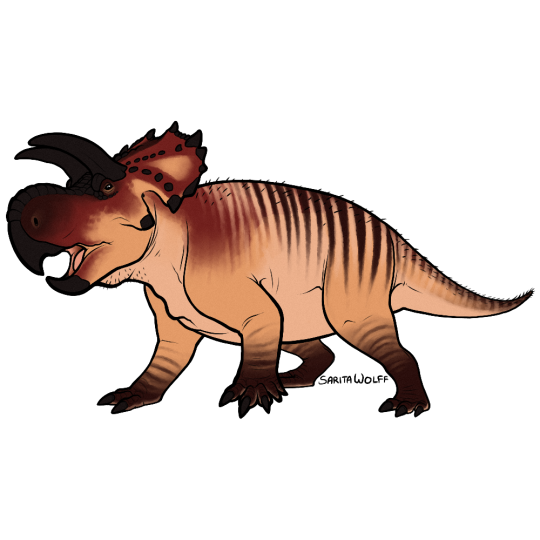
#Archovember Day 2 - Furcatoceratops elucidans
Hailing from Late Cretaceous Montana, USA, this centrosaur was first described in 2015 as a possible species of Avaceratops. However, this past year it was finally thoroughly described and found to represent a new genus and species: Furcatoceratops elucidans. Because of the disarticulated state of the fossil’s skull and skeleton, it is expected to be helpful in further study of ceratopsid osteology.
An early centrosaurine, Furcatoceratops is closely related to Nasutoceratops (who was originally going to go on this year’s list before Furcatoceratops was described!) Like other Centrosaurines, it likely ate tough low-lying plant material, and may have also used its sharp beak to scavenge. The Judith River Formation where Furcatoceratops was found seems to have had a very diverse community of ceratopsids, such as Avaceratops, Medusaceratops, Spiclypeus, and Judiceratops. It would have also shared its environment with the hadrosaurs Brachylophosaurus, Corythosaurus, and Probrachylophosaurus, as well as the ankylosaur Zuul. Furcatoceratops would have been preyed on by the tyrannosaurids Daspletosaurus and Gorgosaurus, as well as the giant alligatoroid Deinosuchus (who we will be seeing very soon).

#my art#SaritaDrawsPalaeo#Furcatoceratops elucidans#Furcatoceratops#Centrosaurine#ceratopsid#ornithischian#dinosaurs#archosaurs#archosauromorphs#Archovember#Archovember2023
22 notes
·
View notes
Text
Forgot to post it here but heres a avaceratops eating MA FUCKEN TRASH
Heres the link if ya wanna see the higher quality of it
https://cdn.fbsbx.com/v/t59.2708-21/398561459_365579562486455_3077476426765327198_n.pdf/Avaceratops_.pdf?_nc_cat=110&ccb=1-7&_nc_sid=2b0e22&_nc_ohc=igA-aYcSTNsAX8CgBWC&_nc_ht=cdn.fbsbx.com&oh=03_AdR6ZIoPwqSgqraebaJ5AFs-aCZyoqNmalqEeMxRbXaz_Q&oe=6544F7BC&dl=1
(also, ignore the signature, its from the old account)

5 notes
·
View notes
Video
youtube
Avaceratops bosque laguna dino world ia #dinosaur #dinosaurios
0 notes
Video
youtube
HUGE SHOPPING SPREE JURASSIC WORLD CHAOS THEORY DINOSAUR TOYS FROM TARGET!! CAMP CRETACEOUS #SHORTS #youtubeshorts Toys include Epic Evolution Chaos Theory All -out attack Tyrannosaurus Rex, Chaos Theory Battle Roarin Becklespinax, Chaos Theory Super Colossal Allosaurus, Chaos Theory Darius Adventure Pack, Chaos Theory Wild Roar Majungasaurus Major, Chaos Theory Wild Roar Parasaurolophus, Chaos Theory Wild Roar Pachyrhinosaurus, Hammond Collection Giganotosaurus, & Hammond Collection Carnotaurus. HUGE SHOPPING SPREE JURASSIC WORLD DINOSAUR TOYS 2024 #TARGET!!! #unboxed soon. Huge Shopping Spree Of ALL NEW Jurassic World Epic Evolution #DinosaurToys February 2024 #walmart #shorts #youtubeshorts #JurassicWorldExtinction Huge shopping Spree of New JURASSIC World #EpicEvolution #DinosaurToys including Isla Sorna Expedition Pack, Barry Sembene ATV Chase Pack, Mission Mayhem Truck Set, Hammond Collection Dimetrodon, Wild Roar Ekrixinatosaurus, Danger Pack Avaceratops, Epic Evolution Gigantic Trackers Neovenator, Epic Evolution Ruthless Rampage Allosaurus, Epic Evolution Poposaurus, Epic Evolution Eoraptor, Epic Evolution Stegouros, Epic Evolution Plesiosaurus, & Epic Attack Crash N Attack Ford Explorer, Rugops Primus, Dimetrodon, & Nasutoceratop. HUGE JURASSIC WORLD DINOSAUR TOYS SHOPPING SPREE Walmart 2023 #SpeedUnboxing #jurasssicWorldExtinction #jw3 #jw4 #crazyDinoToys
0 notes
Text
If i may, >Oops All Muppets! your party become muppets for a session and all of their spells/attacks are now arts n' crafts based >Bodyswap, character sheets switch around to different players for a day >Send players on a wild goose chase to find an NPC named Albert, anyone they talk to asking about Albert seems very confused or indignant. they also have to make 'random' perception checks. Turns out Albert was with their party the entire time wearing a really shitty ghillie suit and each 'random' perception check was a chance to catch him as he was stealing items from them the whole time >1 in every 5 rolls is normal. the rest have a DC of 100 >Make everyone insinuate there is For Sure a Tarrasque under the town they're in, and they have a few hours before it wakes up and kills all of them (the 'Tarrasque' is just a mis-identified Avaceratops)
April Fools Dungeons and Dragons
guys guys help
i need some ideas for april fools for my dnd group.
@naerisstarflower proceed at your own risk
7 notes
·
View notes
Text
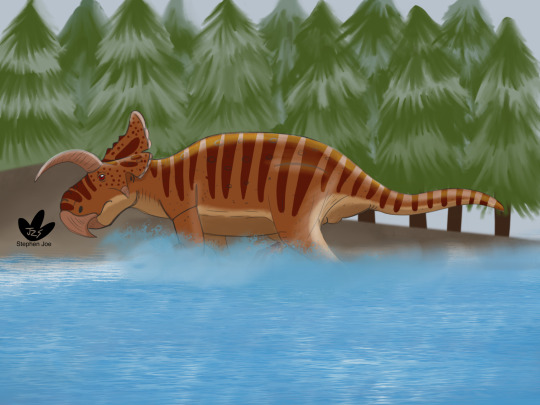
Day 2: Avaceratops lammersi crossing the streams by splash running.
Happy 4th of July.
#my art#dinosaur#paleoart#dinosaurs#myart#dinosauria#sketchbookapp#Judith River July#avaceratops#centrosaurinae#ceratopsidae#ceratopsia#ornithischia
27 notes
·
View notes
Photo

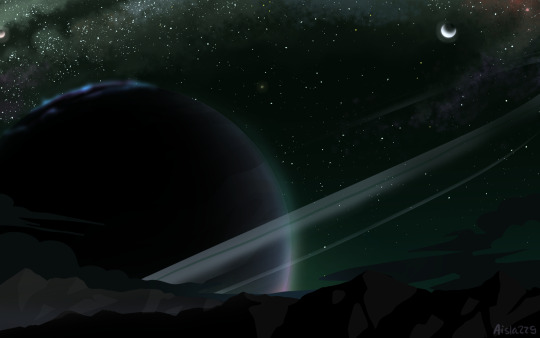
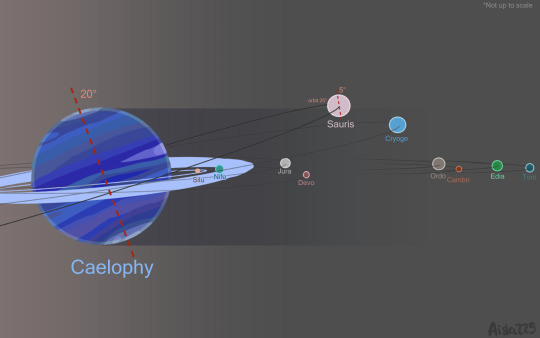
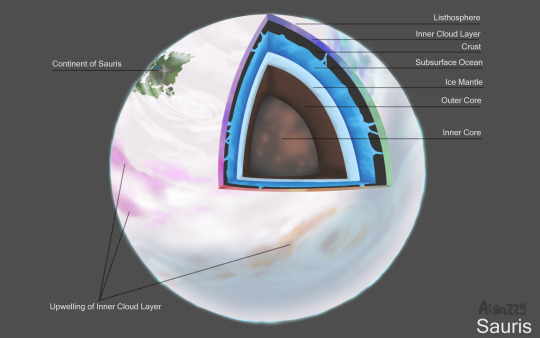
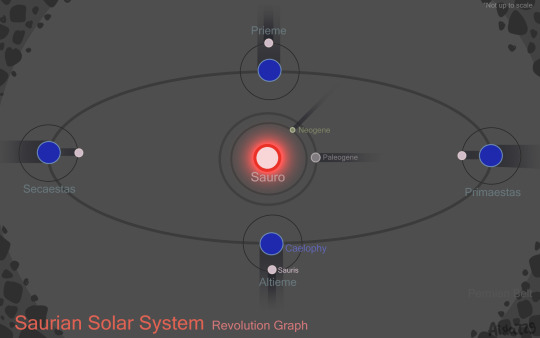
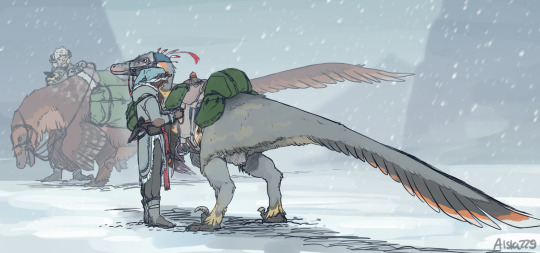
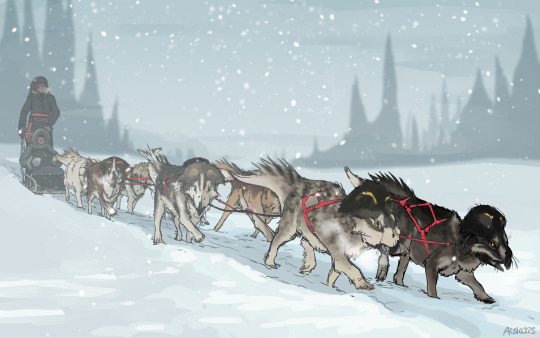
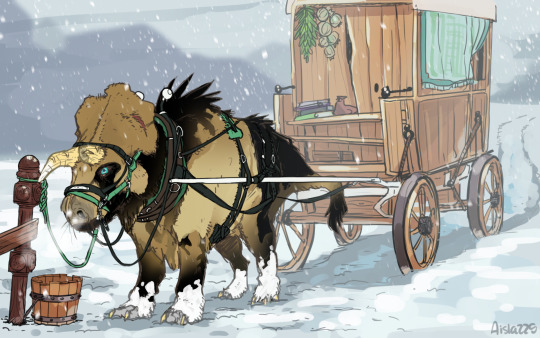
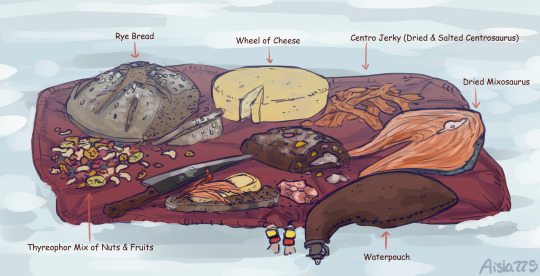
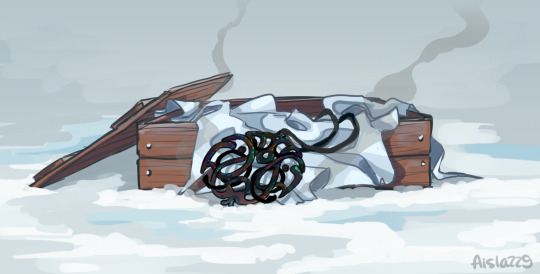
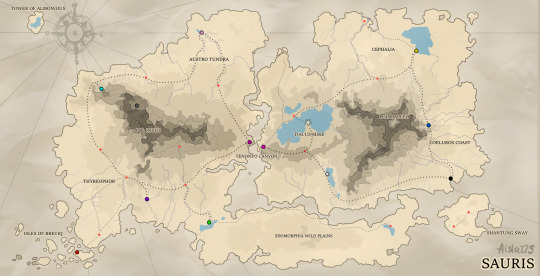
Finished the first arc of the tabletop rpg game I’m GMing, I can finally post all the art! More about the worldbuilding under the cut:
Sauris is a white moon who’s visible surface is mostly composed of clouds. It orbeting around a gas giant, Caelophy. Millenias ago one of the pieces of the crust rolled over in the sea, exposing its side to the sunlight above, past the violent chemically active (and colorful) clouds inbetween. Life boomed on the continent, giving birth to complexe lifeforms such as plants and animals. Currently, civilisation is on the verge of an industrialisation, with a wide and diverse range of trades, for the first time spanning the massive and entire continent.
The active Inner Cloud layer, in an event called the Cloud’s Shift, can burst outwards. When it touches the continent it is believed to be the cause of creation of magic, causing all kinds of odds events as well, like making felines walk on two legs, plants change color, or give mysterious abilities to hidden creatures.
Any magic needs to be cast with a magic circle, each categorised by naturally occuring sigils at the centers. There is 13 known sigils, each named and tide to the planets and moons of Sauro. However tides are about to move, with a few wary travellers coming across a 14th unknown sigil, with the only proof of it being a reserved kid and a suspicious necklace.
Dinosaurs are the prominent life form on Sauris, with only a few mammals (mostly rodents and our beloved humanoids), fish in the rivers, and giant insects in the bogs. Here is a world where dinosaurs are found as locomotion, pets, food, and terrifying predators. It being very cold on Sauris, all year round, they also all rock some fluffy feather/proto-feathers coats.
The seasons no Sauris, are divided into two summers and two winters, spending a large portion of the year partially obscured of Sauro by Caelophy. The highest temperature is around 10°C , and the lowest -30°C
Here on the continent:
- The Tower of Almonious: A distant land discovered by a great sorcerer who has constructed a massive tower on top. Not much is known to the common people of Sauris, and stays inaccessible even today.
- Pol Malleo: An Active volcano, that unlike the ones on Earth does not eject lava, but a hot water-like liquid. Said liquid, named Azura, has a bright blue-turquoise color that glows a powerful green when it comes in contact with certain gases. The jets can go as high as 50 km high in the sky, forming a long colorful trail as it floats away.When an eruption occurs during Altieme, the droplets of liquid tend to freeze instantly in contact with the cold air, forming icicles that drop on the land below, often causing great problems as they bullet the surface.
- Tiacus Mire: It is currently the land in which resides the biggest city of Sauris; Aegyp. It also has the biggest lake: Great Ophora. During Primaestas, the majority of its land gets flooded, creating humid bogs, prospice to massive creatures, such as insects, Spinosaurus, and water dwellers like the massive mosasaurus.
- The Isles of Breviq: It probably has the most unique land shapes of the entire Continent. Long, relatively thin pillars of land have slowly come apart from the main land mass over many centuries, resulting in its numerous islands appearing to float between the clouds. The people of Breviq are known for having tamed the difficult beasts of the sky; riding pterosaurs.
- Pol Incus: The tallest mountain of Sauris, and so the tallest point of the entire moon. Its difficult climb has challenged many minds to reach its freezing top where the air grows thin. Temples and even old artefacts lie across the peaks or hidden under it’s rocks, proving the curiosity this mountain has always inspired.
- Thyreophor: The biggest land of Sauris. Thyreophor is most defined by its lush forests with massive trees and year-long colorful plants capable of holding under massive amounts of snow. It still holds the title of largest population in total.
- The Sdomorphia Wild Plains: Long stretches of grass and brush-like plants extend for as far as the eye can see. Sdomorphia is the land of nomads and the biggest of the animal kingdom: the Sauropods. It might not contain many streams or lakes, but it’s vast stretches borrow perfectly for herd hunting.
- The Austro Tundra: Unlike the other more South lands of Sauris, the Austro Tundra’s soil never melts away. Its rock-solid earth and ice makes it difficult to build houses on, but it has not stopped villages from sprouting even on the coldest land.The Austro Tundra is the land of Theropods, having the biggest number of raptors alike, many of which have prized feather coats.
- The Coelorus Coast: It has some of the biggest rate of precipitation of Sauris, standing on the right side of Pol Malleo against the strong air currents brushing the clouds below. Perhaps from the warmth created by Pol Malleo, the snow in Coelorus tends to melt a lot quicker than the other lands, and with the high amount of rivers and streams lining the soils, it also is one of the most fertile places. The steep sides of the volcano create perfect ranges for step agriculture, and primarily corn and rice.
- Cephalia: It currently has the title of the land with the biggest number of farm-land. Cephalia is often defined as the most friendly populace. With its loudest voices being farmers and workers, it has a particular streak of freedom and carelessness attached to its name.
- The Shantung Sway: A land carrying its own ecosphere, the people of Shantung have remained centuries without connection to the rest of Sauris. The current path to its land is extremely recent and trades have yet to be initiated. Apart from a very few explorers that have left Shantung to see the lands, and all described as fairly eccentric, interactions have been minimal so far.Shantung has been described as odd and fairy tale-like. With plants that glow in the dark, upside-down trees that prevent snow from reaching the ground, and weird spiky structured rocks. With bizarre animals, dinosaurs naked without feathers, small floating octopus creatures, and long leg-less organisms that slithered like tree branches.
- The Tenonto Canyon: The great divider between Malleo and Incus, the canyon expands down as far as can see, battered with wild winds and dangerous looking tornadoes beneath the clouds. A single bridge has been built on the closest edges, where the trade route quickly bustled with life, and ultimately created Mer, an unique city split in two across each side, one in the Tiacus Mire and the other in Thyreophor.
I’d like to say a big thank you to the players for being so patient and being so invested in this world i created, I love you guys. And thanks to anyone who actually read this!
#long post#doodles#dinosaur#austroraptor#protoceratops#avaceratops#worldbuilding#fantasy world#fantasy#DnD#dungeons and dragons#tabletop rpg#my art#I'm trying to make a summary of this 35+ pages doc OH BOI
3K notes
·
View notes
Photo




Some real weird stuff happening in the woods tonight
#Avaceratops#Gorgosaurus#Pteranodon#Utahraptor#Megalosaurus#Dinosaur#Pterosaur#Prehistoric#halloween#Goldenchocobo's Art
296 notes
·
View notes
Photo



Happy Pride Month! I made pride flag colored dinosaurs:
Asexual Avaceratops
Bisexual Bambiraptor
Gay Gallimimus
Lesbian Lesothosaurus
Nonbinary Tenontosaurus
Pansexual Panoplosaurus
LGBT+/Queer Quaesitosaurus
Trans Yutyrannus
Buy stickers and more on my redbubble
#lgbt#lgbt+#queer#paleoart#dinosaur#dinosaurs#nature#asexual#ace#avaceratops#bisexual#bambiraptor#gay#gallimimus#pride#pride month#lesbian#lesothosaurus#nonbinary#nb#enby#tenontosaurus#trans#transgender#yutyrannus#pansexual#panoplosaurus#quaesitosaurus
48 notes
·
View notes
Photo

I am ALSO looking to take dinosaur commissions! 3 slots, so as to not overwhelm myself!
if it’s a dinosaur that’s relatively out there, all i ask is that you provide references (like wiki pages and/or anatomy) so i can draw them as best as i can! If you’re interested, please contact me here, my dA, or my Instagram!
dA - https://www.deviantart.com/catpoof
Instagram - https://www.instagram.com/catpoof/
#dinosaur#dinosaurs#dinosaur art#dinosaur commission#dinosaur commissions#paleoart#raptor#velociraptor#utahraptor#cryolophosaurus#dilophosaurus#avaceratops#ceratosaurus#the isle#the isle game#path of titans#beasts of bermuda#commission#commissions#art#my art
18 notes
·
View notes
Photo
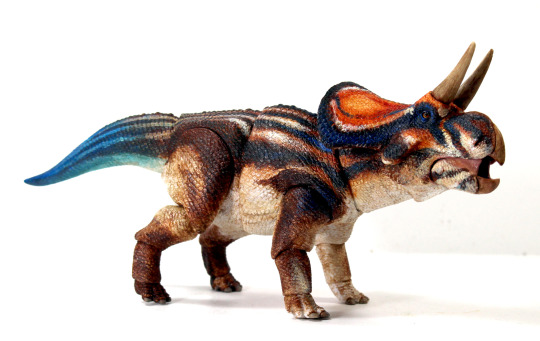






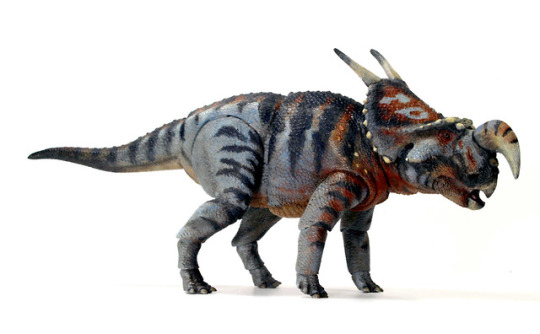

Beasts of the Mesozoic: Ceratopsian Series – What’s been unlocked*
Zuniceratops christopheri
Monoclonius crassus
Triceratops horridus (sub-adult)
Styracosaurus albertensis
Chasmosaurus belli
Diabloceratops eatoni
Nasutoceratops titusi
Einiosaurus procurvicornis
Avaceratops lammersi
Kosmoceratops richardsoni
Spiclypeus shipporum
Protoceratops andrewsi
Psittacosaurus mongoliensis
Medusaceratops lokii
Regaliceratops peterhewsi
The Kickstarter campaign ends Thu, October 17 2019 7:00 PM UTC +03:00.
https://www.kickstarter.com/projects/creativebeast/beasts-of-the-mesozoic-ceratopsian-series-action-figures/
*last edited 17 October 2019
#palaeoblr#beasts of the mesozoic#zuniceratops#monoclonius#triceratops#styracosaurus#chasmosaurus#diabloceratops#nasutoceratops#einiosaurus#avaceratops#kosmoceratops#spiclypeus#toys and collectibles
265 notes
·
View notes